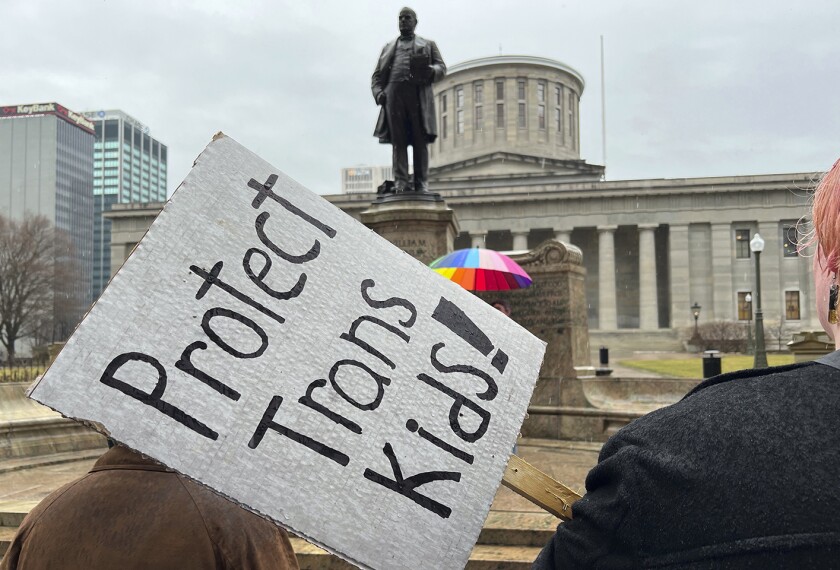As states consider slashing their education budgets in a plummeting economy, the fallout could include layoffs, increased health-care costs for workers, shorter school weeks, and cuts in school programs.
Many states are expected to deal with their funding crises in legislative sessions beginning next month, while others have already started moving decisively to lower costs.
Gov. Arnold Schwarzenegger has called for a special session to deal with California’s budget shortfall, which is expected to grow to $28 billion over the next 18 months. Education is on the chopping block, and both the Republican governor and Democrats in the state legislature have proposed scaling back the budget for K-12 schools by $2.5 billion. The Democrats want the cuts targeted to specific programs to try to allay the effects on classroom instruction.
In Delaware, the education department faces at least $150 million in cuts, and Secretary of Education Valerie Woodruff has said she will not propose any new programs in the next budget. The education department was budgeted for more than $1.1 billion for the current fiscal year. Gov. Ruth Ann Minner, a Democrat, has asked all state agencies to cut their budgets by 15 percent next year because of falling state revenues.
Ohio Gov. Ted Strickland, who spent several months working on a new education plan, indicated last week that it would be difficult to provide an overall increase in funding for schools.
Mr. Strickland’s plan includes classroom changes and a fix of the state’s school funding system. He has said his long-awaited proposal will provide a net increase in money for schools, but the economy will make that hard.
The Democratic governor will present the plan as part of the two-year budget he’ll put before lawmakers early next year. He has said he will take the proposal to the ballot if lawmakers don’t approve it.
In New York state, Gov. David A. Paterson, a Democrat, had proposed midyear reductions in school aid, lopping off $585 million in the current fiscal year and another $844 million next year. But the plan, which would have pared aid to school districts across the state and would reduce spending on math and science grants, libraries, arts grants, and special teacher-mentoring programs, fell apart after legislators failed to see eye to eye with the governor on his budget cuts. A resolution is now not expected until next year.
Proposals from Hawaii lawmakers to reduce education spending range from closing public schools for six days to requiring teachers and other employees to work without pay for four days out of the school year. One suggestion calls for hiring fewer teachers and increasing the number of students in each classroom.
In Arizona, the next president of the state Senate said spending for precollegiate education will have to be up for review when lawmakers act to keep the state budget in the black.
Protective Moves
Democratic Gov. Janet Napolitano and her allies in the legislature largely fended off reductions in school funding when the current budget was enacted, but Arizona now faces a projected $1.2 billion shortfall in the budget year that ends June 30. A bigger shortfall is anticipated in the next budget. Spending on K-12 schools accounts for $4.1 billion of the $9.9 billion budget, according to the Joint Legislative Budget Committee staff.
Among the proposals is trimming the school week to four days.
Some states, meanwhile, are focusing on leaving education intact, or even increasing spending slightly, while looking at other areas to cut.
Gov. Theodore R. Kulongoski’s newly released budget for Oregon includes a 2.5 percent increase for K-12 schools. The Democratic governor meanwhile reduced spending by 7 percent in other areas, including job cuts in other departments.
Meanwhile, the board that oversees Alabama’s largest savings account, the Alabama Trust Fund, has taken steps that will help keep the state education budget from being sharply cut. The board’s vice chairman, state Finance Director Jim Main, said the governor has made no decision about when to declare proration, or an across-the-board cut in spending. But it could be next month, and the board has acted to make sure it has cash available at that time if the governor needs it.
Mississippi Aid
Mississippi lawmakers and Republican Gov. Haley Barbour decided to spare public education even as they made reductions to other departments. A program that aims to provide equal funding for districts will also be fully funded.
In South Dakota, gop Gov. Mike Rounds has proposed a $3.7 billion state budget that would nearly drain the state’s main savings account to cover what he called basic needs in education, public safety, and care for the needy.
The governor proposed a 3 percent increase in general state aid to school districts in the budget year beginning next July. But his budget plan also would save state money by eliminating some kinds of aid to schools and by allowing local property taxes to pick up a slightly larger portion of school costs.
Gov. Bill Richardson is backing a $350 million proposal to overhaul how state money is distributed to districts in New Mexico, but the Democrat wants voters to decide, possibly through a referendum or constitutional amendment, whether to raise taxes to pay for the educational improvements that are estimated to cost $350 million.
New Mexico faces a budget shortfall that is likely to reach $500 million or more this year.




